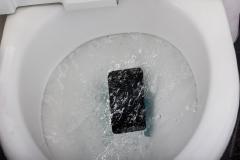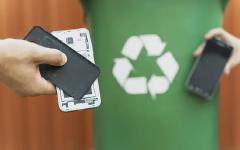Categories
10 ways to be greener with your phone (part 1)
7 minute read
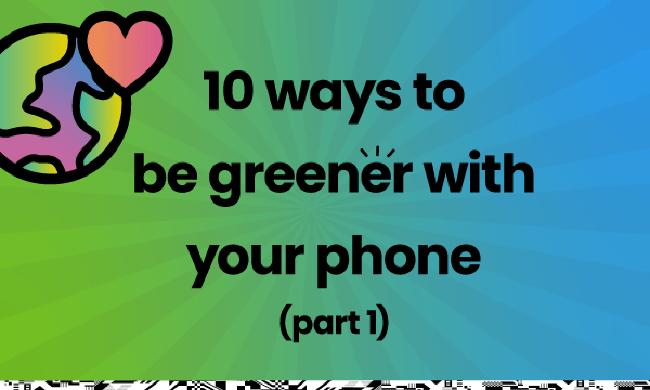
In this two-part blog, we’ll be looking at ways you can be greener with your smartphone.
It’s hard to imagine a world without your smartphone these days isn’t it? They’re great little devices, keeping us connected not only to our friends and family, but to the rest of the world. Plus, they’re our very own mini entertainment systems, providing us with movies, music and games. What’s not to love?
But while our helpful little pocket-sized friends are an essential everyday item for most people, they do have a downside: CO2.
Now, we aren’t talking about tonnes of toxic fumes being pumped out by each device. But everytime we charge our phones, or use the Internet, energy is being used somewhere in the world. Be it the electricity in your home, or a data centre hundreds of miles away.
Realistically, the amount of CO2 produced by each phone is small. Much less than a car or plane, for example. But, the problem is that most people these days have a mobile phone.
In the UK alone, some 55 million people (82% of the UK’s population) own a phone. And a recent report by the BBC shows that the average person “devotes” about a third of their waking hours to their smartphones.
All those people, devices and time spent on phones really starts to add up. In the UK alone, it’s estimated that some 330 million tonnes of CO2 is produced by smartphones every year. And that’s a problem for us, as humans, and the environment.
But there are ways that you can do your bit, without compromising too much on your daily habits.
Here’s the first 5 tips to help you be more sustainable with your phone’s usage, reducing the amount of energy you’ll use and prolonging your battery life everyday.
1. Reduce your screen’s brightness
Some people need to have their phone screens on a brighter setting. But, if it’s comfortable for you to do so, try lowering the brightness of your screen.
One of the biggest drains on batteries is the backlight in your screen. By lowering the brightness it helps reduce wear on your phone’s battery and extend its life, meaning you’ll have to charge less.
You can also go a step or two further. As long as it doesn’t affect your usability, try changing your background and screensaver to black or darker colours.
Also most modern phones and apps now have a setting called “dark mode”. This changes the background from white to black and the text to white on the apps. This reduces the backlight usage and is often easier on the human eye. Win-win.
Ultimately, a brighter, more colourful screen, means more strain on your battery. So by making these changes, you’ll find your battery lasting longer, meaning you’ll have to charge less. Saving energy and the environment.
2. Recharge your phone a different way
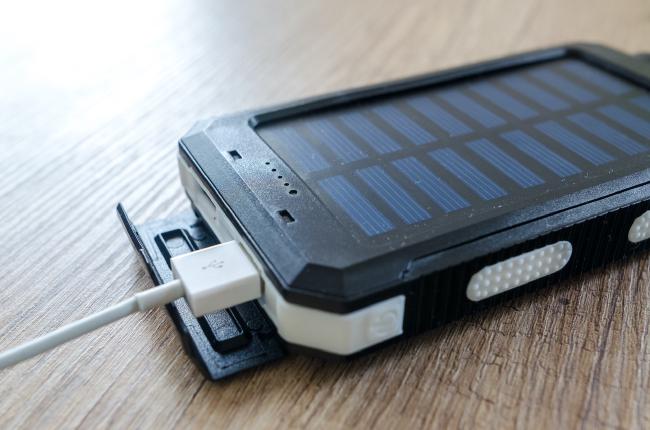
How do you charge your phone? Usually it’s using the little USB plug and cable that came with your phone, right?
Well that’s usually the fastest method of charging your phone. But it’s not the only way, and it’s not always the best.
We know this happens less these days, but if you drive to work, or travel a lot still, one of the best ways is to charge your phone is via your car.
If you’re going to be using your car for work or essential travel, then make use of the energy it provides along the way. Cars are like their own mini power plants, generating energy as you drive.
So you can simply plug your phone into a built-in USB port, or you can buy USB adapters that slot into your car’s cigarette lighter.
This saves on using electricity in your home and power being generated by the national grid or power stations.
Don’t own or use a car much? Don’t worry. Try solar.
You could also try solar power. In recent years, solar chargers for phones have come a long way.
You can get ones which charge directly into your phone while they’re plugged in. Or you can get some which charge their own power banks for later use; so you have a little battery pack to provide you with much needed juice.
I know what you’re thinking: “This is Britain, we have no sun!”
Well, that might be true for most of the year, but many modern solar chargers are designed to work even in low light or overcast days. So, as long as it’s daytime, you can get free energy for your phone.
There’s a whole variety of solar chargers out there. Some are very portable, some less so. But it’s certainly a great option to get free, environmentally-friendly energy to charge your phones or other smaller devices.
3. Give your phone a night off
This one’s a simple idea, but might be hard for a lot of people. One great way to reduce your phone’s carbon emissions is to simply not use it for a night.
Now, you might want to keep your phone on for emergencies or absolute necessities. We can’t fault you for that.
But if you put the phone to one side for an evening it’ll really help. So stop looking at your screen, or unlocking it and checking for messages every 5 minutes (we all do it). And stop using unnecessary apps for an evening. You don’t need to crush candy to pass the time, so give it a rest for a night.
Try this just once a week and it’ll make a difference. It’ll help reduce carbon emissions from data centres and extend the battery life in your phone, meaning you’ll need to charge less.
4. Stop charging overnight
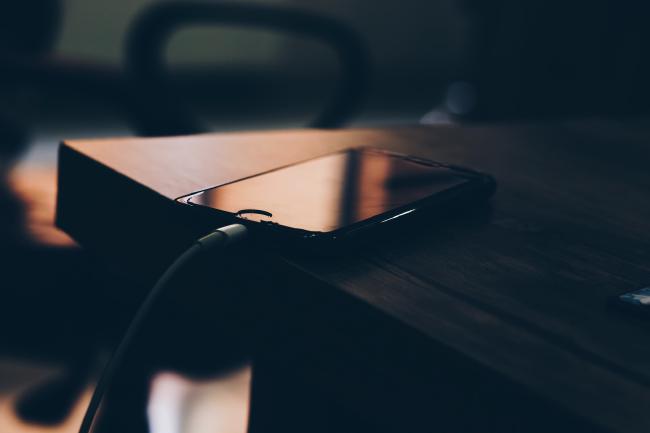
Don’t leave your mobile charging after it’s full. This is one of the most common drains of energy and also a big reason why phones can die out earlier than expected.
Lithium-ion batteries are best kept 50-80% charged, so charging in short bursts throughout the day is probably the best way to preserve your battery life.
And if you keep your phone on charge overnight, it can cause it to bounce between 99% and 100%, wasting energy.
Some phones have an adaptive charging mode, which can help reduce the strain on the battery and avoid wasting energy when your phone is plugged in overnight.
But the best way to reduce wear and tear on your battery and use less energy is to charge your phone in the evening, before bed. Then unplug and turn off your plug at the wall.
Because if you take your phone off charge, but leave your power cable plugged in, it’s generating a small amount of energy. But that energy is going nowhere. So it’s a total waste.
5. Search the Internet sustainably
You might be thinking: “What? How do I ‘search sustainably’?”
Well, the fact of the matter is that all search engines use data centres, which use a lot of energy. And making searches online adds to that energy use, which means more CO2 generated.
But, there are now some very cool companies out there who help to offset the carbon footprint on your searches, by creating sustainable search engines.
Possibly the biggest environmentally-friendly search engine is Ecosia. A non-profit organisation, Ecosia, spends 80% of its profits to help plant trees around the world.
Not only does Ecosia plant trees, but the company claims it actually produces 200% of its energy through renewable energy. This means that its solar panels produce twice the amount of energy needed for its searches. Wowsers.
And Ecosia isn’t the only sustainable search engine. There are more options out there, some of which (like Gexsi) donate funds to climate change and marine conservation. Or others which use 100% renewable energy for their data centres.
So browsing online, needn’t cost the Earth.
Until next time
So there you have our first 5 tips to be a bit greener with your phone use. Hopefully these will help you save on energy and your phone’s battery life too.
In the second part of this blog, we’ll be looking at ways to help improve your phone’s life in sustainable ways and also ways to make more sustainable choices for your next phone.
If you have your own ideas on how to make your phone use greener, we’d love to know. Join the conversation and share it in our Community thread.
Or, for other tips, check out our other sustainability ideas elsewhere on our blog.
